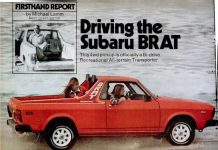Here’s the latest reader question, along with my reply!
Brian asks: Why am I forced into buying the 91 octane premium fuel to avoid putting harmful ethanol into my 2000 Toyota Tundra and 98 Isuzu Rodeo? My understanding of the issue is that my older vehicles are not made to accept this fuel without causing some deterioration in fuel tank, lines, and injectors, etc. I like driving these older vehicles because they are easy to work on and I don’t have big brother in the passenger seat, collecting data on everything, and oh yeah they are paid for and well maintained. I live in Montana, so I cant speak for other areas of the country but that’s my choice of gasoline here. Both vehicles recommend 87 octane is sufficient to run the engines at good performance levels. Love your articles on LRC you are always sticking it to the man, please keep up the good fight!
My reply: Forced is exactly it, Brian. There’s no natural demand for ethanol; it is forced into the fuel supply via something called the Renewable Fuels Standard (RFS). This is a federal mandate that requires a portion of all the motor fuels sold in the country be “renewable.” As a practical matter, this means ethanol alcohol. The agribusiness lobby aggressively pushed (and defends) the RFS, which handsomely lines their pockets in a classic example of what economists call rent seeking. And now the car industry is joining up with the ethanol lobby, for reasons of its own (ethanol is an octane enhancer and the car industry wants to build high-compression engines to make it easier for them to meet government fuel economy mandates; subject for another rant).
Back to your question…
Your 2000 and ’98 vehicles shouldn’t suffer from using ethanol so long as the concentration is not higher than 10 percent (E10). This is what most “gas” sold in the U.S. is, regardless of octane rating. It’s been in circulation for a long time – since the ’90s – and vehicles made since the ’90s were made to accommodate this ethanol-laced “gas.”
The main harm you’ll see is reduced fuel economy. You have probably noticed this, if you’ve observed the mileage you get on a tankful of 100 percent gas vs. 90 percent gas and 10 percent ethanol (E10).
The main thing is to never use “gas” with an ethanol percentage above 10 percent, such as E15 or E85. That will hurt your vehicles.
So, the rule is: Read the label at the gas pump before you pump.
And: Send hate mail to the ethanol lobby and the pols who are its paid-for agents in your state capital and the federal capital.
. . .
Got a question about cars – or anything else? Click on the “ask Eric” link and send ’em in!
If you like what you’ve found here, please consider supporting EPautos.
We depend on you to keep the wheels turning!
Our donate button is here.
If you prefer not to use PayPal, our mailing address is:
EPautos
721 Hummingbird Lane SE
Copper Hill, VA 24079
PS: EPautos magnets are free to those who send in $20 or more. My latest eBook is also available for your favorite price – free! Click here. If you find it useful, consider contributing a couple of bucks! 












The presence of ethanol-free gas stations where I live (in the Appalachian region) is one reason why I’m glad I left the Baltimore-Washington region years ago.
You can check out the https://www.pure-gas.org/ website to see if a local gas station offers corn free gas.